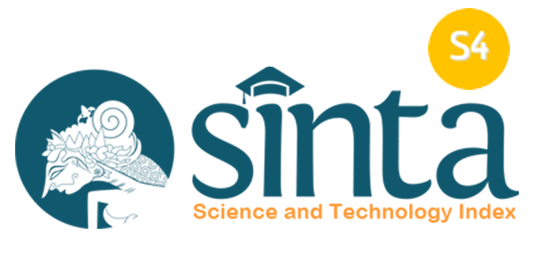Study of Mathematical Reasoning Ability for Mathematics Learning in Schools: A Literature Review
Abstract
Keywords
Full Text:
PDFReferences
Bernard, M., and Chotimah, S. (2018). Improve student mathematical reasoning ability with open-ended approach using VBA for powerpoint. AIP Conference Proceedings, 2014(1), 020013.
Brousseau, G. (2006). Theory of didactical situations in mathematics: Didactique des mathématiques. Springer Science and Business Media, 19(2006), 1970–1990.
Chotimah, S., Bernard, M., and Wulandari, S. M. (2018). Contextual approach using VBA learning media to improve students’ mathematical displacement and disposition ability. In Journal of Physics: Conference Series, 948(1), 012025.
Creswell, J. W., and Creswell, J. D. (2017). Research design: Qualitative, quantitative, and mixed methods approaches. Sage publications.
Demeter, T. (2019). Hume on the social construction of mathematical knowledge. Synthese, 196(9), 3615-3631.
English, L. D. (2013). Analogies, metaphors, and images: Vehicles for mathematical reasoning. In Mathematical Reasoning (pp. 11-26). Routledge.
Erdem, E., and Soylu, Y. (2017). Age-and Gender-Related Change in Mathematical Reasoning Ability and Some Educational Suggestions. Journal of Education and Practice, 8(7), 116-127.
Fuadi, R., Johar, R., and Munzir, S. (2016). Peningkatkan kemampuan pemahaman dan penalaran matematis melalui pendekatan kontekstual. Jurnal Didaktik Matematika, 3(1), 47-54.
Habsah, F. (2017). Developing teaching material based on realistic mathematics and oriented to mathematical reasoning and mathematical communication. Jurnal Riset Pendidikan Matematika, 4(1), 43-55.
Henningsen, M., and Stein, M. K. (1997). Mathematical tasks and student cognition: Classroom-based factors that support and inhibit high-level mathematical thinking and reasoning. Journal for Research in Mathematics Education, 28(5), 524-549.
Herbert, S., Vale, C., Bragg, L. A., Loong, E., and Widjaja, W. (2015). A framework for primary teachers’ perceptions of mathematical reasoning. International Journal of Educational Research, 74(2015), 26-37.
Hidayat, W., Wahyudin, and Prabawanto, S. (2018). Improving students’ creative mathematical reasoning ability students through adversity quotient and argument driven inquiry learning. In Journal of Physics: Conference Series, 948(1), 012005.
Kadarisma, G., Nurjaman, A., Sari, I. P., and Amelia, R. (2019, February). Gender and mathematical reasoning ability. Journal of Physics: Conference Series, 1157(4), 042109.
Knopf, J. W. (2006). Doing a literature review. PS: Political Science and Politics, 39(1), 127-132.
Lestari, W., and Jailani. (2018, September). Enhancing an ability mathematical reasoning through metacognitive strategies. Journal of Physics: Conference Series, 1097(1), 012117.
Marasabessy, R., and Hasanah, A. (2021). Penalaran matematika: Apa aspek sentralnya?. Jurnal Cendekia: Jurnal Pendidikan Matematika, 5(1), 562-577.
Mata-Pereira, J., and da Ponte, J. P. (2017). Enhancing students’ mathematical reasoning in the classroom: teacher actions facilitating generalization and justification. Educational Studies in Mathematics, 96(2), 169-186.
Piaget. (1964). Cognitive development in children: Piaget development and learning. Journal of Research in Science Teaching, 2(1964), 176-186.
Rosnawati, R. (2013). Kemampuan penalaran matematika siswa SMP Indonesia pada TIMSS 2011. Prosiding Seminar Nasional Penelitian, Pendidikan dan Penerapan MIPA, Fakultas MIPA, Universitas Negeri Yogyakarta, 18(2013), 1-6.
Shimizu, N. (2000). An analysis of" make an organized list" strategy in problem solving process. PME Conference, 4(2000), 4-145.
Sukirwan., Darhim2 and T Herman. (2018). Analysis of students’ mathematical reasoning. Journal of Physics: Conference Series, 948(1), 012036.
Sumartini, T. S. (2015). Peningkatan kemampuan penalaran matematis siswa melalui pembelajaran berbasis masalah. Mosharafa: Jurnal Pendidikan Matematika, 4(1), 1-10.
Wijaya, T. T., Ying, Z., and Purnama, A. (2020). Using hawgent dynamic mathematic software in teaching trigonometry. International Journal of Emerging Technologies in Learning (IJET), 15(10), 215-222.
DOI: https://doi.org/10.17509/ijotis.v1i2.37950
Refbacks
- There are currently no refbacks.
Copyright (c) 1970 Universitas Pendidikan Indonesia

This work is licensed under a Creative Commons Attribution-ShareAlike 4.0 International License.
Indonesian Journal of Teaching in Science (IJoTIS) is published by Universitas Pendidikan Indonesia (UPI)
 Indonesian Journal of Teaching in Science
Indonesian Journal of Teaching in Science



